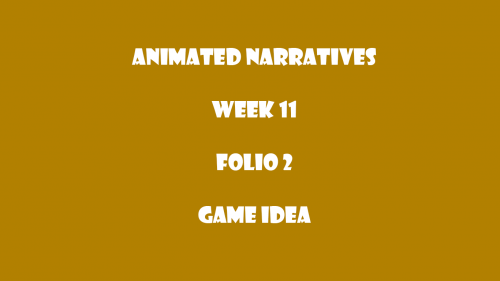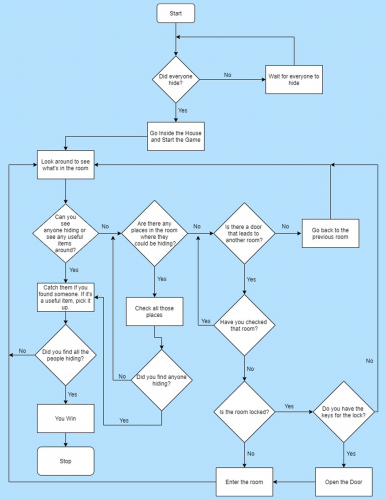
For week 11, I decided to plan and create a flowchart for a simple game that I could prototype in Week 12. I used the idea of the iterative workshop to come up with quick ideas that I could work on. I selected one of those ideas, built more on it through bullet-points, and created a flowchart to end the week.
The basic theme of the game that I decided to work on latches on the idea of telling a story through the environment rather than the characters itself. It’s a simple hide-and-seek game, where you and a couple of other friends, play in a given environment (for this project, inside a house). This allows the player to use the environment given to them and come up with different scenarios and results every time.
By using interactivity as a medium for this idea, I can create an immersive piece for the users. I can make the simple idea of hide-and-seek interesting by adding things that are not possible in the real world. Using interactivity instead of linear animation also allows me to tell the story through the environment rather than the character itself. The result, in the end, will depend on how the user interacted with the environment to complete the objective.
This theory of using the environment to tell the story is brought up in our week 8 reading by Ian Bogost in his article ‘Video Games Are Better Without Stories’, where he talks about how environments in an interactive piece can allow the user to discover and reconstruct a fixed story. This is what I am using as the base theory for my game idea too, where I use the environment around the user to make things interesting and challenging, with a simple storyline ‘Find your friends’.
By using the process of the iterative workshop that we worked on in class, I was able to come up with and discard a lot of ideas quickly. By using bullet-points to further those ideas, I was able to let my mind run free and write down anything that came to my mind about that topic. Later, I filtered those bullet-point and choose the best of the bunch of which I created a flowchart. Through the flowchart, I was able to plan how the game might work, what process the player might go through to win. After creating the flowchart, I was able to follow the entire gameplay, figure out what’s missing and what needs to be taken out of the game to make it less complicated.
About This Work
By Atul Shakya
Email Atul Shakya
Published On: 03/06/2020


